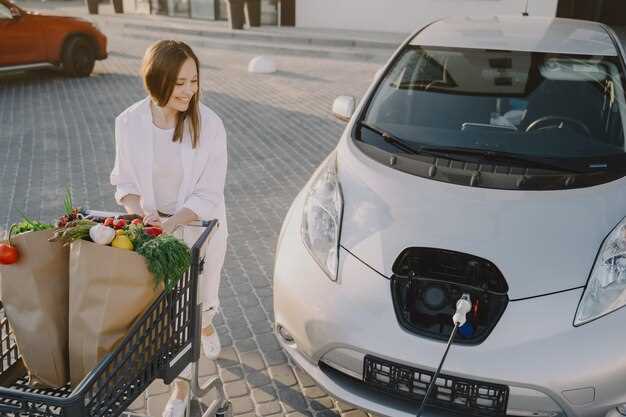The Dos & Don’ts of Hybrid Car Ownership

Owning a hybrid car comes with a unique set of advantages and challenges that can significantly impact your driving experience and financial well-being. As environmentally conscious vehicles, hybrids often promise lower fuel consumption and reduced emissions, but understanding how to maximize these benefits is essential for every owner. This article aims to provide valuable insights into effective hybrid car ownership.
First and foremost, understanding the technology behind hybrid vehicles is crucial. Unlike traditional cars, hybrids utilize a combination of an internal combustion engine and an electric motor, which work together to enhance performance and efficiency. Familiarizing yourself with how these systems interact can help you make smarter decisions about driving and maintenance, ultimately extending the life of your vehicle.
Another key aspect is regular maintenance. While hybrids typically require less maintenance than conventional vehicles, it is still vital to follow the manufacturer’s guidelines closely. This includes checking the battery health, ensuring proper tire inflation, and keeping up with oil changes. These practices not only enhance performance but also prevent costly repairs down the line.
Finally, adopting efficient driving habits can significantly improve your hybrid’s fuel economy. Techniques such as gradual acceleration, maintaining a steady speed, and utilizing regenerative braking can help you maximize the benefits of your vehicle. By integrating these tips into your daily routine, you can enjoy a more economical and environmentally-friendly driving experience.
Understanding Your Hybrid Vehicle’s Powertrain
A hybrid vehicle combines an internal combustion engine (ICE) with an electric propulsion system. This integration aims to optimize fuel efficiency and reduce emissions. Understanding the components of a hybrid powertrain is essential for effective vehicle operation and maintenance.
The key component of a hybrid powertrain is the hybrid battery, which stores energy used to power the electric motor. Typically, these batteries are rechargeable and have a longer lifespan than traditional lead-acid batteries. Monitoring the battery’s health is crucial, as degradation can affect overall performance.
The electric motor works in tandem with the internal combustion engine, delivering power in various driving conditions. In low-speed situations, such as city driving, the electric motor often handles the majority of propulsion, leading to increased fuel efficiency. When acceleration is necessary, the ICE kicks in to provide additional power.
Hybrid vehicles typically feature a regenerative braking system, which recovers energy during braking and sends it back to the hybrid battery. This process enhances efficiency by utilizing energy that would otherwise be lost as heat in traditional braking systems.
Understanding how to switch between electric and gasoline modes helps the driver maximize efficiency. Many hybrids automatically adjust their operation based on speed, acceleration, and battery charge, allowing for seamless transitions between power sources.
Drivers should also be aware of the drivetrain configuration. Some hybrids utilize a series configuration where the ICE powers a generator that charges the battery and provides energy to the electric motor. Others use a parallel configuration, where both the engine and motor can drive the wheels simultaneously or independently.
Routine maintenance of the hybrid powertrain components is vital. Regular checks on the hybrid battery, cooling system, and electrical components can prevent issues and enhance longevity. It’s advisable to follow the manufacturer’s maintenance schedule and consult with qualified technicians experienced in hybrid technology.
In summary, a solid understanding of your hybrid vehicle’s powertrain, including the interaction between components like the battery, electric motor, and internal combustion engine, can significantly enhance your ownership experience and ensure optimal performance.
Optimal Charging Practices for Hybrid Batteries
Hybrid vehicles combine an internal combustion engine with an electric motor, relying on both sources of power. Proper charging practices can significantly enhance battery life, efficiency, and overall vehicle performance. Here are essential tips for optimal charging of hybrid batteries:
| Tip | Description |
|---|---|
| 1. Use the Right Charger | Always use the manufacturer’s recommended charger. This ensures compatibility and prevents battery damage from incorrect voltage or current. |
| 2. Charge Regularly | Avoid letting the battery completely discharge. Regular charging, even for short periods, helps maintain the battery’s health and capacity. |
| 3. Avoid Frequent Full Charges | Constantly fully charging the battery can lead to degradation over time. Aim for partial charges instead, keeping the battery between 20% and 80% when possible. |
| 4. Monitor Temperature | Charging in extreme heat or cold can adversely affect battery performance. Ideally, charge the vehicle in a moderate climate for better efficiency. |
| 5. Use Regenerative Braking | Utilize regenerative braking features in your hybrid car. This captures energy normally lost during braking, channeling it back to recharge the battery. |
| 6. Schedule Charging Off-Peak | If your utility provider offers lower rates during off-peak hours, schedule your charging accordingly to save on electricity costs and reduce grid demand. |
| 7. Disconnect When Fully Charged | Unplug the charger once the vehicle reaches a full charge to avoid trickle charging, which can negatively impact battery longevity. |
By adhering to these practices, hybrid vehicle owners can prolong battery life and enhance performance, ensuring a smooth and efficient driving experience.
Tips for Maintaining Fuel Efficiency

Maintaining optimal fuel efficiency in your hybrid car is essential for maximizing performance and reducing environmental impact. Here are key tips to help you achieve this goal:
- Regular Maintenance: Follow the manufacturer’s maintenance schedule, including oil changes, air filter replacements, and battery checks.
- Tire Pressure: Keep tires inflated to the recommended pressure. Under-inflated tires can reduce fuel efficiency significantly.
- Smooth Driving: Practice gentle acceleration and braking. Rapid changes in speed can lead to increased fuel consumption.
- Use Eco Mode: If available, utilize the Eco mode feature. This can optimize your vehicle’s performance for better fuel efficiency.
- Minimize Idling: Turn off the engine when parked or waiting for extended periods, as idling consumes fuel unnecessarily.
- Reduce Weight: Remove unnecessary items from your car. Extra weight requires more energy and can decrease fuel efficiency.
Implementing these tips can lead to improved fuel economy and enhance the longevity of your hybrid vehicle.
Choosing the Right Driving Mode for Different Conditions
Hybrid vehicles typically offer multiple driving modes that cater to various conditions and preferences. Understanding these modes can enhance both efficiency and performance. Here’s a breakdown of how to select the appropriate mode based on different driving scenarios.
1. Electric Mode: This mode is ideal for short trips and city driving. When engaging this setting, the car primarily operates on electric power, which is not only silent but also minimizes fuel consumption and emissions. It’s perfect for stop-and-go traffic, allowing you to maximize battery usage while lowering your carbon footprint.
2. Hybrid Mode: In this mode, the vehicle optimally balances both the gasoline engine and electric motor. It’s suited for everyday driving as it automatically adjusts to driving conditions. Use this mode when you are on mixed routes, as it allows for efficient fuel management without compromising performance.
3. Sport Mode: For scenarios requiring quicker acceleration and more responsive handling, engage the sport mode. This setting utilizes the combined power of the gasoline engine and electric motor for enhanced performance. Ideal for highway merging or when overtaking other vehicles, sport mode delivers a more dynamic driving experience but may reduce fuel efficiency.
4. Eco Mode: Focusing on maximizing fuel efficiency, eco mode is designed for longer journeys where conserving fuel is a priority. It adjusts throttle response and limits the use of the air conditioning. Activate this mode during highway drives or when cruising at steady speeds to achieve optimal fuel economy.
5. Off-Road Mode: For hybrid vehicles equipped for rough terrain, off-road mode enhances traction and stability. Engage this setting when driving on rugged paths or in adverse weather conditions, ensuring better control and safety.
In conclusion, selecting the appropriate driving mode according to specific conditions can significantly enhance your hybrid driving experience. By being mindful of each mode’s strengths, you can improve efficiency, performance, and overall enjoyment during your journeys.
Key Maintenance Checks to Preserve Battery Life
To ensure the longevity and efficiency of your hybrid vehicle’s battery, regular maintenance checks are essential. Start by monitoring the battery’s state of charge (SOC) regularly. Keeping the SOC between 20% and 80% helps minimize stress on the battery, enhancing its lifespan.
Next, inspect the cooling system that manages battery temperature. Overheating can significantly reduce battery efficiency and lifespan. Ensure that the cooling ducts and fans are functioning properly and free from debris. Regularly check the coolant levels and replace the coolant as per the manufacturer’s guidelines.
Examine electrical connections for corrosion or damage. Clean terminals to ensure a good connection, which is vital for optimal battery performance. Tighten any loose connections to prevent voltage drops that can lead to increased wear on the battery.
Additionally, perform software updates as recommended by the manufacturer. Technological advancements can improve battery management systems, which can enhance efficiency and performance. Always consult your dealer for the latest updates pertinent to your vehicle.
Finally, maintain appropriate driving habits to preserve battery life. Avoid frequent rapid accelerations and heavy braking, as these can strain the battery. Instead, practice smooth acceleration and deceleration to enhance regeneration and minimize energy consumption.
Maximizing Resale Value of Your Hybrid Car
To ensure that your hybrid car maintains its resale value over time, there are several key strategies to consider. First and foremost, regular maintenance is crucial. Adhering to the manufacturer’s service schedule and keeping detailed records can boost buyer confidence. Consider keeping your service receipts organized as potential buyers often appreciate transparency regarding vehicle history.
Another important aspect is the condition of the vehicle. Maintain a clean and well-kept interior and exterior. Regular washing and waxing not only protect the paint but also enhance aesthetic appeal. Additionally, consider using quality seat covers and floor mats to protect the interior.
Upgrades and modifications can impact resale value positively. Investing in high-quality accessories, such as advanced infotainment systems, safety features, or eco-friendly tires, can make your car more attractive to buyers. However, be cautious with overly personalized modifications that may not appeal to the next owner.
Documentation is vital when selling a hybrid vehicle. Provide buyers with the original owner’s manual, warranty information, and any additional documentation related to the hybrid system. This adds credibility and reassures buyers about the vehicle’s longevity and reliability.
Timing can also play a significant role in maximizing resale value. Research market trends to identify the best time to sell. Factors such as seasonality or economic conditions can influence demand. Generally, spring and summer months are more favorable for selling vehicles.
Finally, consider the platform for selling your hybrid car. Utilize various channels such as online marketplaces, local dealerships, or trade-in options. Each platform may attract different types of buyers, impacting the final sale price.
By focusing on these strategies, hybrid car owners can effectively enhance their vehicle’s resale value, ensuring a profitable transition when it’s time to sell.

